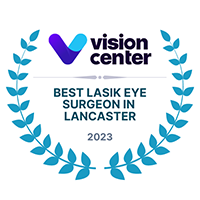As we get older, we face more and more problems with our health, especially when it comes to our vision. Problems like cataracts and glaucoma are much more common among the older population.
One of the most common issues is presbyopia. Keep reading to find out what happens when you have presbyopia!
What Is Presbyopia?
Presbyopia causes farsightedness. It is different from hyperopia (farsightedness) due to how the farsightedness occurs.
With farsightedness, the corneal shape is what causes it. The difference with presbyopia is that it occurs in the lens of the eye.
The lens is inside the eye, behind the pupil and iris, and is normally soft and flexible. This allows it to move and adjust, changing the focus of your eyesight.
But, as we age, the lens loses its elasticity and becomes more rigid causing eyesight to become locked up. This process generally begins to occur after the age of 40.
This is why the word “presbyopia” translates from Greek to mean “old eye”.
Treatment Options for Presbyopia
You can live with presbyopia and still function. For tasks that need close up vision such as reading, you will need to choose one of three options: glasses, contacts, or surgery.
Many people are fine with using prescription glasses to correct their impaired vision. Multifocal lenses are popular as they can provide good vision at more than one distance.
You can even find line-free versions! These are much more powerful than traditional bifocal lenses. Reading glasses are viable but are not as ideal as you need to remove them whenever you aren’t using them.
Glasses have many downsides. The biggest one is that they are visible on your face. If you do not like how you look in glasses, then you may want to consider contacts.
Contact lenses are like glasses that you put directly onto the surface of your eyes. They provide the same quality of vision as glasses, even multifocal ones.
For some, contacts may be uncomfortable to put in. They also need more maintenance and frequent replacement. If you want the best of both worlds, there are surgical options to fix presbyopia.
Possible surgical options include corneal inlays, LASIK, refractive lens exchange, and a procedure called conductive keratoplasty. At Chesen Laser Eye Center we proudly offer NearVision CK to our patients.
NearVision CK
NearVision CK is a laser-free, scalpel-free procedure. NearVision CK uses radio waves to change the shape of the cornea to bring the vision into focus.
An incredibly thin probe is applied to the cornea in a circular pattern as it produces radio waves. These waves cause the collagen in the area to shrink and tighten them in a band.
This changes the corneal shape without needing to cut into the eye itself. The radio energy produced is completely safe to use on the eyes, as well as many other parts of the body.
After NearVision, you will be able to return to most of your normal routine the day after surgery. You should be careful not to strain yourself too much for a while.
Have any questions about NearVision CK or other presbyopia treatments? Schedule an appointment at Chesen Laser Eye Center in West Reading, PA today!






